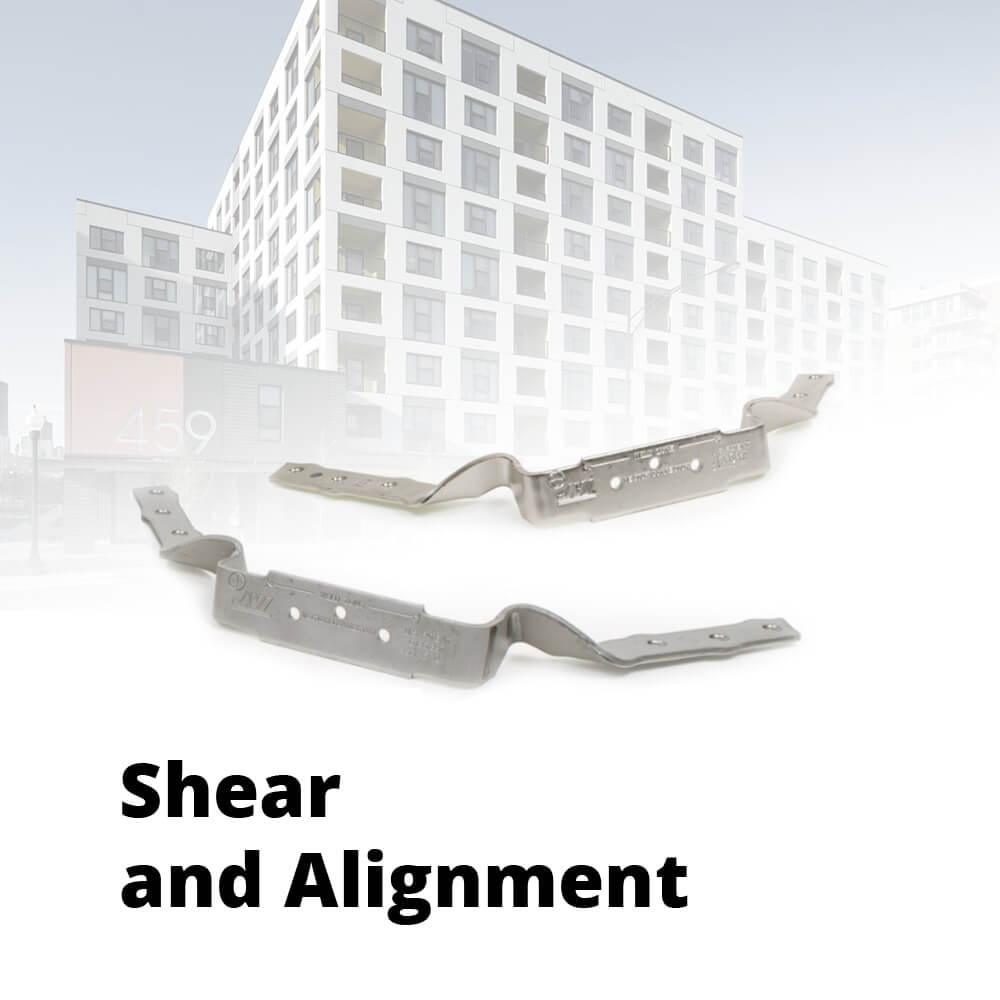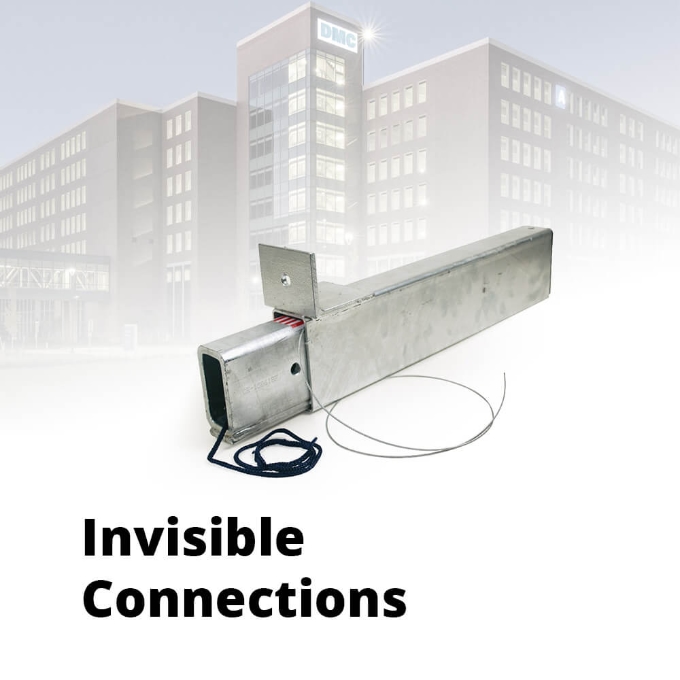
Procedure for Determining Fire Ratings for Precast Structures
Credit: Original article published here.
Often times we get asked about the fire rating for a total precast structure that incorporates precast double tees. In this blog I will walk you through the steps. For this process we are going to make the following assumptions: 10’-0 wide double tees (stem spacing is 5’-0 o.c.; Double tee flange thickness is 2”; Silicious Aggregate. Flange thickness and aggregate type can vary by region, so you will need to check with your local Precaster to determine the appropriate section properties and aggregate type.
Step 1: Flange Thickness
Table 720.1 (3) International Building Code, Item #1 – Siliceous Aggregate 1.1.1 – Slabs

Use above table to figure out how thick the composite slab must be for a given fire rating.
In our example, the double tee flange thickness is 2”, therefore, if you are looking for a 2 hour fire rating, you will need an additional 3” of composite topping for a 5” total thickness.
Step 2: Steel Protection
Table 720.1(1) International Building Code, Item #3 – 3-1.1 – Bonded Pretensioned Beam
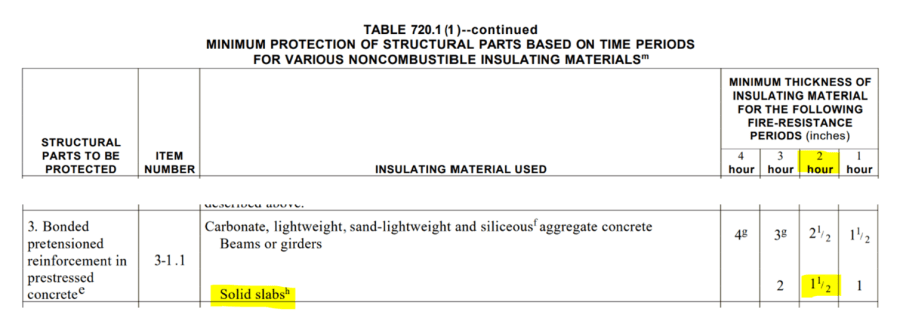
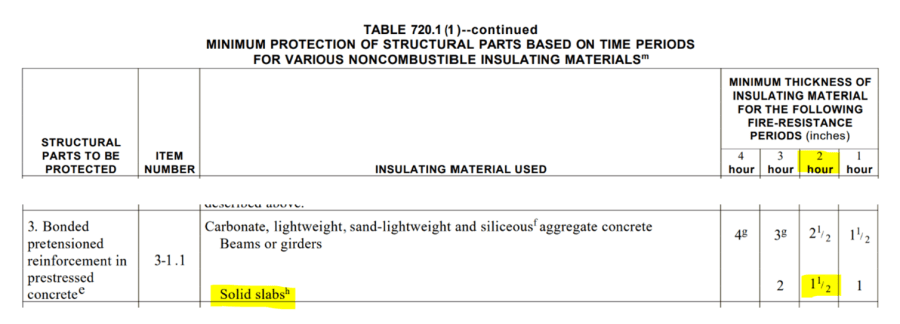
Use above table to figure out much cover on strand there needs to be for a given rating. If the stems are spaced at 4’-0 o.c. or less the member is considered a beam or girder. In our example, the double tee has a stem spacing of 5’-0 o.c. therefore it is considered as a “solid slab”. As such, we must have a minimum of 1-1/2” of concrete cover over our strand. (Note that the cover is at the centroid of all the strands, not at the bottom most strand.)
Example:
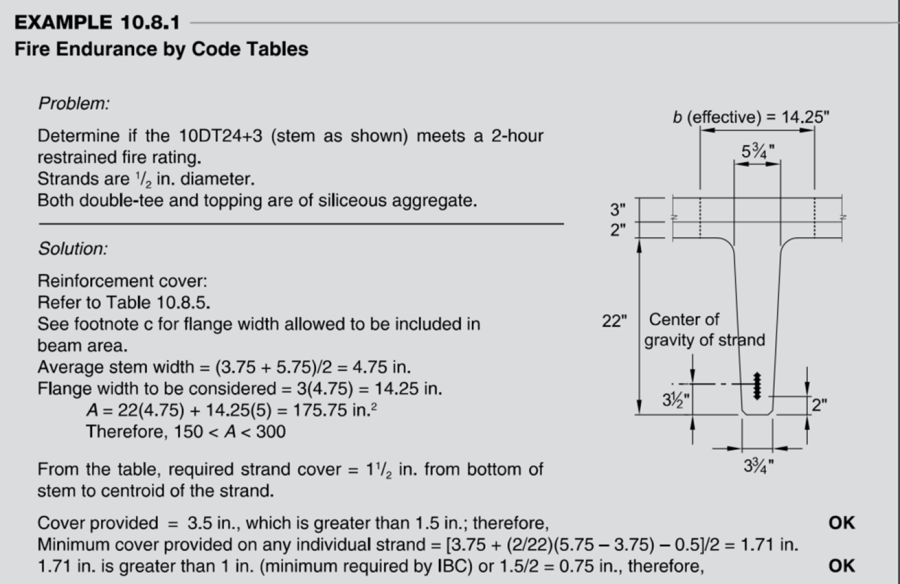
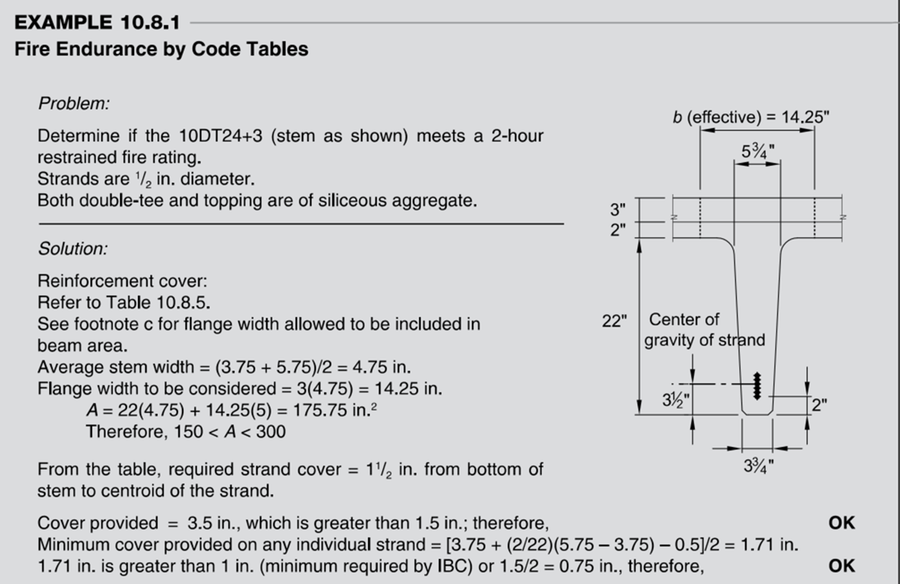
RESTRAINED VS. UNRESTRAINED:
- 7th Edition PCI Design Handbook, Page 10-3, 10.3.1.1;
- Beams more than 4 ft. on centers (double tee stems): the above steel temperatures must not be exceeded for classifications of 1 hr or less; for classifications longer than 1 hr, the above temperatures must not be exceeded for the first half of the classification period or 1 hr, whichever is longer.
Interpretation: If restrained, must only meet one half of the fire rating. Therefore, we only need to meet the requirements for a 1 hour Fire Rating.
- Beams more than 4 ft. on centers (double tee stems): the above steel temperatures must not be exceeded for classifications of 1 hr or less; for classifications longer than 1 hr, the above temperatures must not be exceeded for the first half of the classification period or 1 hr, whichever is longer.
Excerpts from ASTM E119, “Standard Test Methods for Fire Tests of Building Construction and Materials, “Table X3.1. (Also listed in Table 10.3.1; PCI Handbook 7th Edition, Page 10-4)
III. Concrete Framing
- All types of prefabricated floor or roof systems where the structural members are secured to such systems and the potential thermal expansion of the floor or roof systems is resisted by the framing system or the adjoining floor or roof construction.
Footnote c. For example, resistance to potential thermal expansion is considered to be achieved when:
- Continuous structural concrete topping is used
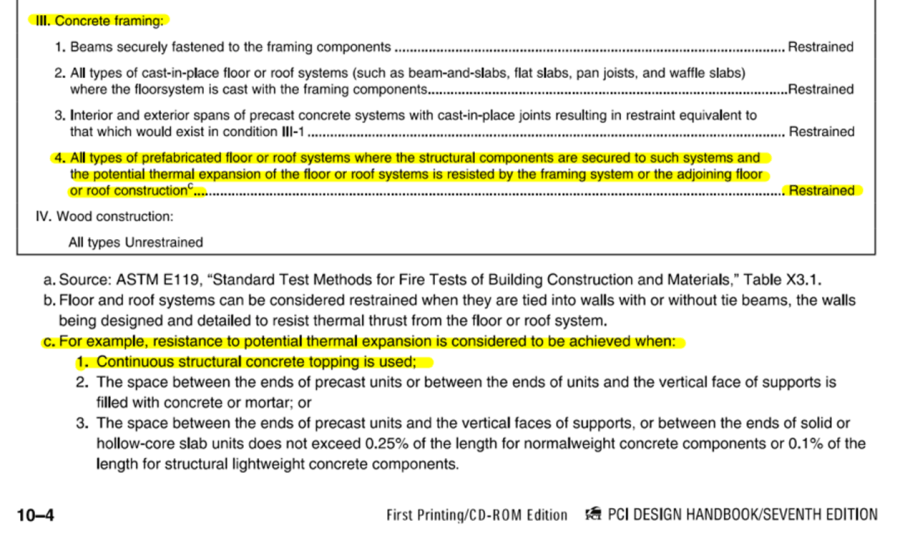
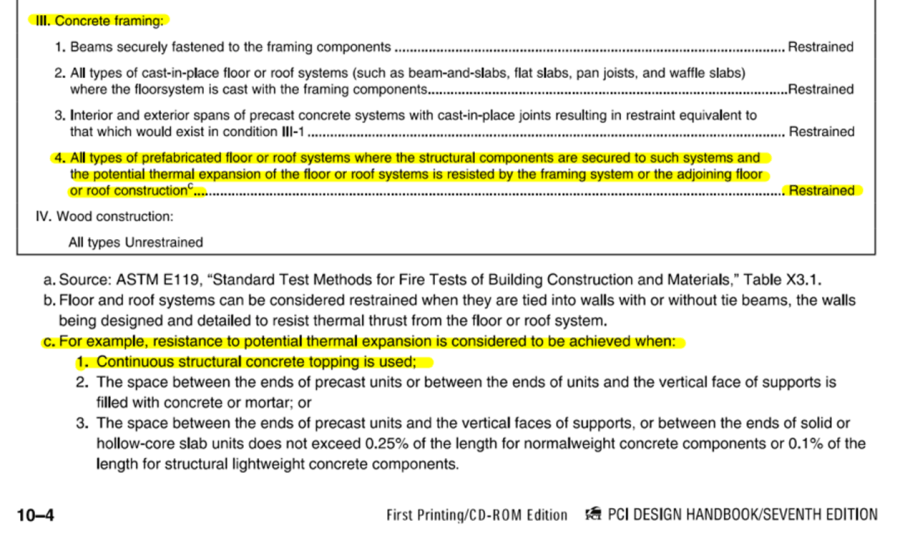
Dan Parker
Director of Client Services


